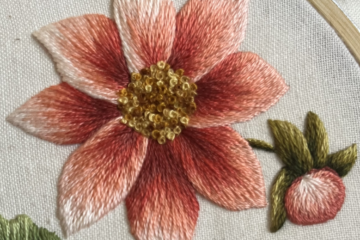A frequent request I hear from clients is to ensure that their manuscript establishes a clear narrative arc. All research tells a story about why it is necessary, how it was executed, and how it contributes to both industry and inquiry. A worthwhile editor will help you to refine this story so that it is as clear and sharp as possible. The good news is that writers who practice solid fundamentals will usually not struggle too much in this area. After all, this idea was compelling enough that you invested substantial time and effort in investigating the question! All you have to do is recount the path you took to the reader. Along the way, though, there are some extra checks you can perform as you write to make sure you stay firmly on that path all the way to your conclusion.
Navigation
The simplest way to check your narrative arc is via the navigation function in your word processor. When you type your key words into the navigation bar, you want to find them consistently scattered throughout your text from start to finish. This indicates whether you are integrating concepts that you have established as important into your text. On the other hand, if you find that you introduced a key word in your introduction and only revisit it in the conclusion, it may be worth examining the reasons for this. Does the text just need more tweaking? Or, does the concept itself need to be reevaluated for its usefulness in advancing your project? Either way, a simple search of your document can quickly signal potential digressions.
Transitions
Another, more careful check for narrative arc is to read through your transition moments throughout the paper. These include words, phrases, and explanatory sentences that you use to move from one idea to the next. The key question here is: Can I discern a clear chain of of steps from start to finish? If you can, then you are likely leading your reader consistently from one thought to the next. If you have been paying attention to organization, you will likely be pleasantly surprised at how straightforward this exercise becomes. This check also becomes more useful in later drafts of the paper. As a text develops, and as elements shift around, writers frequently add transitions toward the end of the writing process. In a mature draft, reading your transitions can help you to quickly identify where you may need to add (or subtract!) supplemental content.
Final Paragraphs
The third and most granular check is to read the summary paragraphs of each section: Do these paragraphs conclude ideas and wrap up loose ends? Do they set the stage for the transition to the next section? If you can answer “yes” to both of these questions, then your summary material is doing the heavy lifting for the narrative arc. This is a strong indicator that you have a clear story! These interludes provide a break for the reader to orient themselves, to process new information, and to set their expectations for the next section. All of this serves to cement the narrative of your research process more firmly in the reader’s mind. As a bonus, when it comes to writing your conclusion, you will have less summarizing to do, because your reader will have already had major themes reinforced in other sections of the paper. A win all round!
Narrative arc almost always flows naturally from writing fundamentals like consistency and organization. All research begins with a question and ends with some sort of answer, and writing about it simply expands on that journey. Using one or more of these checks at different stages of the writing process can provide you with extra confidence that you are transmitting that research value to your audience.

